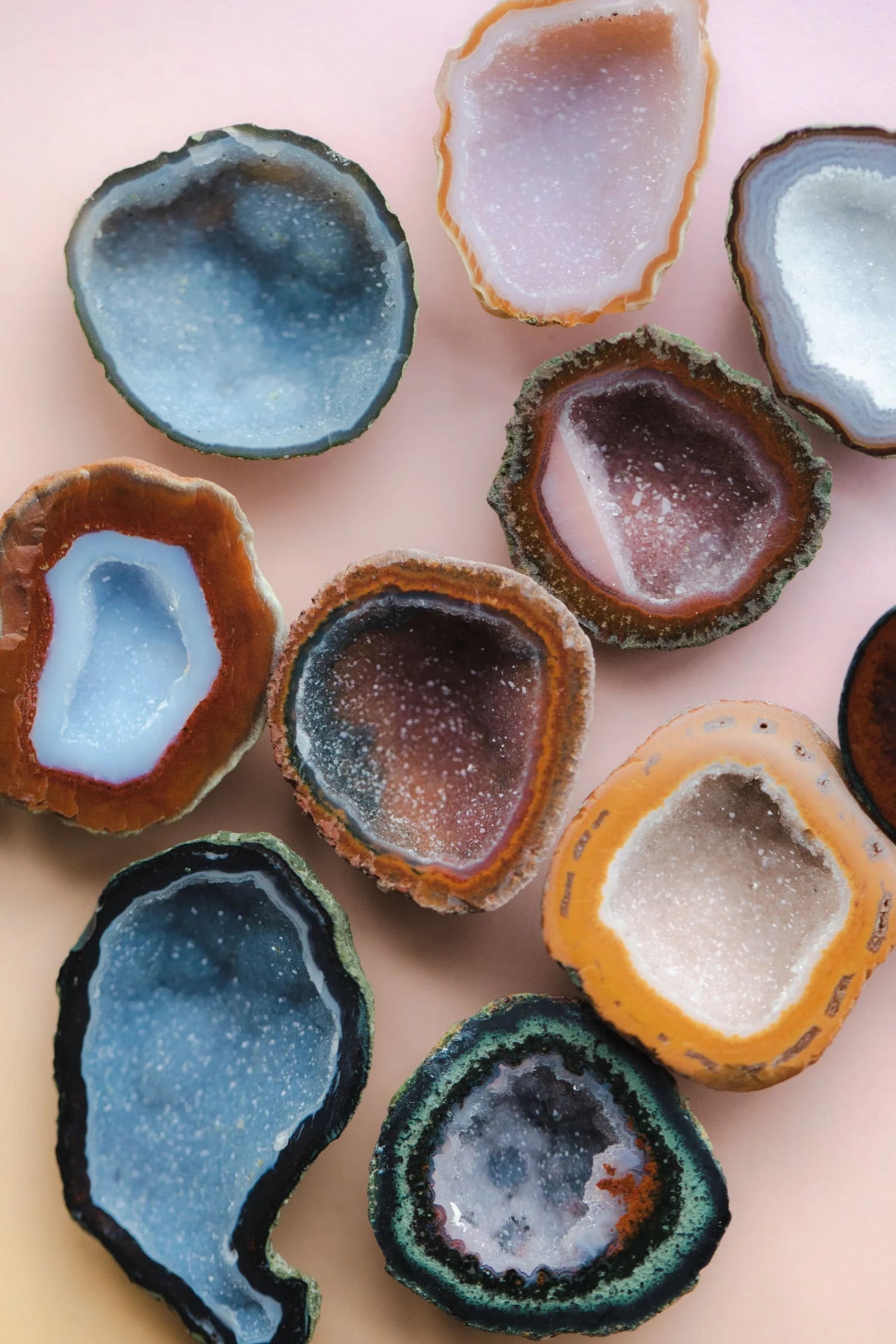ABOUT THE STONES

Agate geodes: a galaxy of colour and crystals
Agate geodes are the foundation of Karolin Van Loon. Formed over millions of years, these ancient stones look simple on the outside but, once opened, reveal a kaleidoscopic range of colours and crystalline structures.
What are agate geodes?
There are two types of geodes: the volcanic, which begin as gas bubbles trapped in cooling lava; or sedimentary, which are created as rock weathers over time, creating hollow cavities. In both cases, mineral deposits carried by groundwater slowly seep into the empty space and eventually crystallize into a mesmerising combination of colours and crystals. Because no one agate has the same deposit of minerals as the next, every stone is unique. For this reason, every Karolin Van Loon creation is truly a one of a kind, a singular design that can never be recreated.
Karolin Van Loon’s inspirations
The name geodes is derived from the Greek word geoides, meaning ‘earth-like,’ yet their aurora-like colours and constellations of crystals also echo far away galaxies. This duality is a constant source of inspiration for Van Loon: formed beneath the earth, yet resembling the sky; ancient in origin, yet strikingly modern as jewelry; raw in nature, yet possessing an otherworldly beauty.
Each of the agate geodes in Karolin Van Loon’s jewellery is hand selected by the brand from a family-owned mine in Mexico before it is transported by to the atelier in the heart of Antwerp’s diamond district. There, it is united with the world’s most precious materials—diamonds, gold, and pearls—to create fine jewelry unlike any other.
